Written by Lorrie Reynolds
Categories
Confidence and Agility Dogs
Of the “Six “C”s for Distance in Dog Agility” that I teach, the most important one for your team is Confidence. Your dog has to be confident in you, in your cues, and in his training to be able to work away. Without confidence, your dog will constantly be turning back to you, questioning your direction, and hesitating or stopping before moving away to take an obstacle.
The six “C”s are so important that I created a free 30-minute training course just to discuss them. I make it available periodically – join our community to be notified the next time it is open to watch.
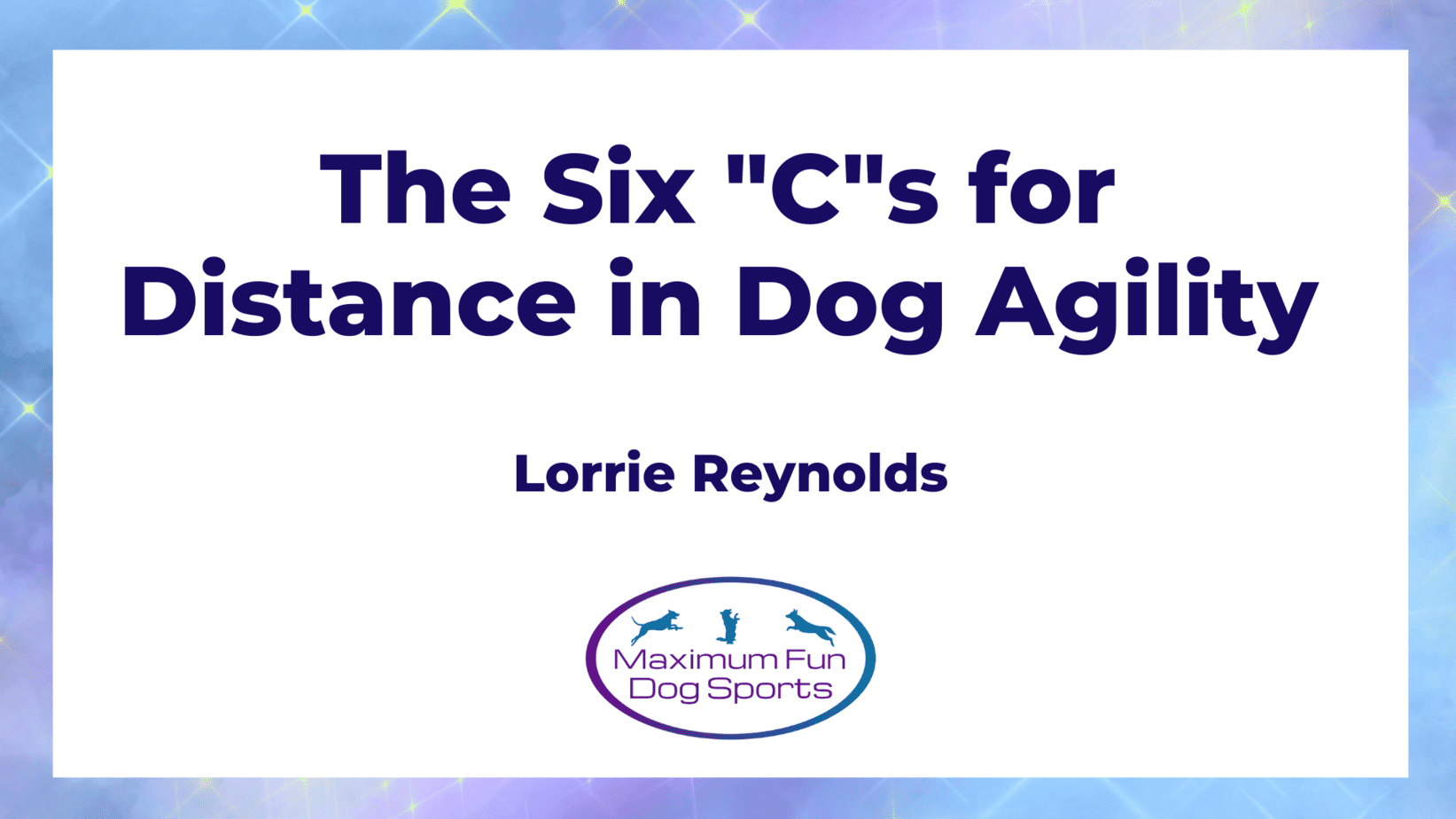
How Do I Know My Agility Dog Needs Confidence?
Mary asked me for help because her dog was constantly spinning in front of her and barking. She was worried that he was going to trip her and make her fall.
Brandi had a dog that would start out to do the distance challenge, but would stop halfway, or turn around and come back to her.
Michael’s dog was constantly knocking bars at a distance. He wanted to know how he could teach her to keep the bars up, no matter how far away he was.
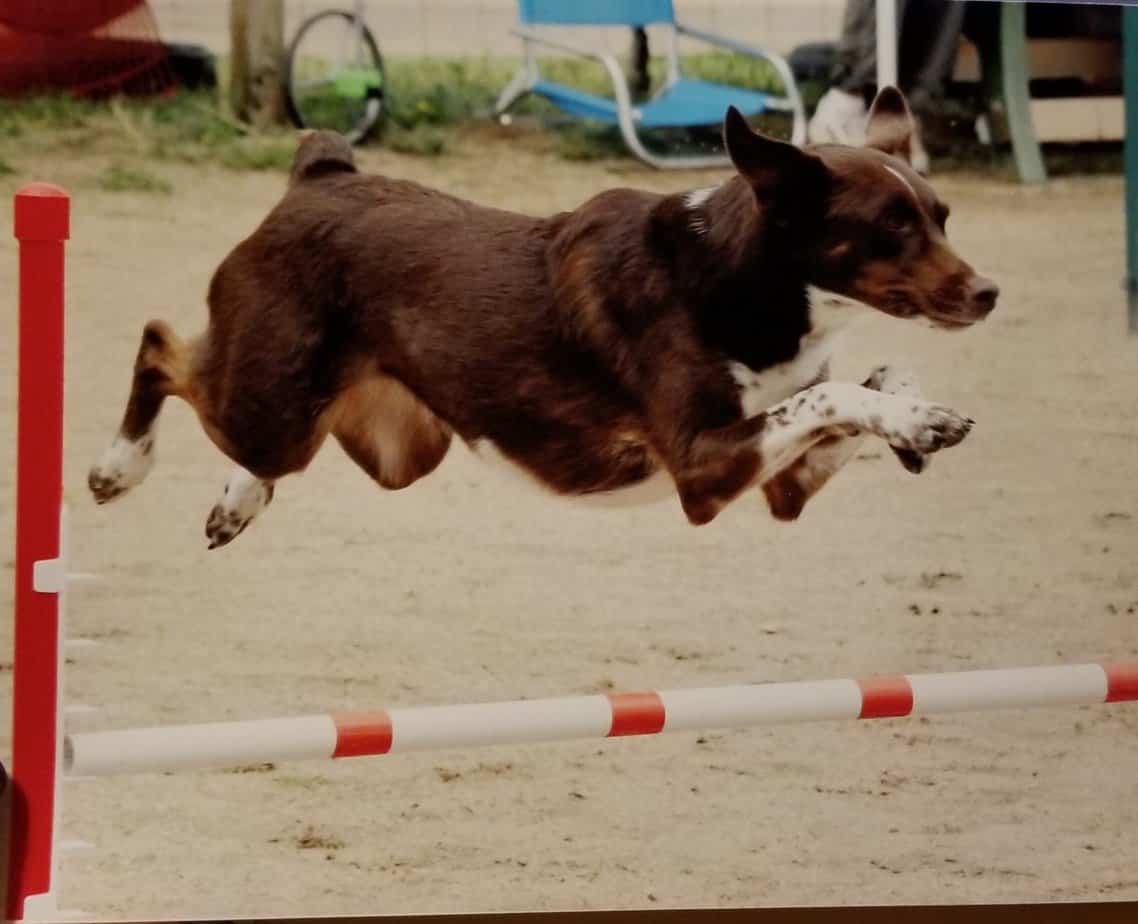
These look like three different issues – lack of obstacle focus and commitment for the barking, spinning dog, lack of distance for the dog that hesitated, and lack of jumping skills for the bar knocker. After a little bit of digging though, they all boiled down to one thing – lack of confidence.
Mary’s early foundation training always had her standing or running right next to the obstacles, cueing her dog for each one. As her dog grew more experienced, and increased his speed, she couldn’t keep up, but he hadn’t been trained to take the obstacles on his own, so he was running back to tell her “Hurry up! Tell me what to do!.” He was frustrated with her lack of direction, so he barked and ran back to her. He lacked confidence in his ability to perform obstacles independently.
Brandi’s dog knew how to take the obstacles, but she was not consistent with her cues, sending him out and then rocking back as if she had changed her mind. She also used different cues to mean the same thing, sometimes telling him to go out with the closer arm, and other times using her outside arm. When he didn’t take an obstacle in an exercise or at a trial, she went back and made him try again. His confidence in his handler eroded until he was double-guessing every cue she gave.
Michael’s dog had good obstacle commitment, but his cues were often late, or he changed his mind about his handling mid-course, so she was so busy watching him for direction that she often misjudged jumps. Instead of being confident in her path, she was constantly looking back to him for changes.
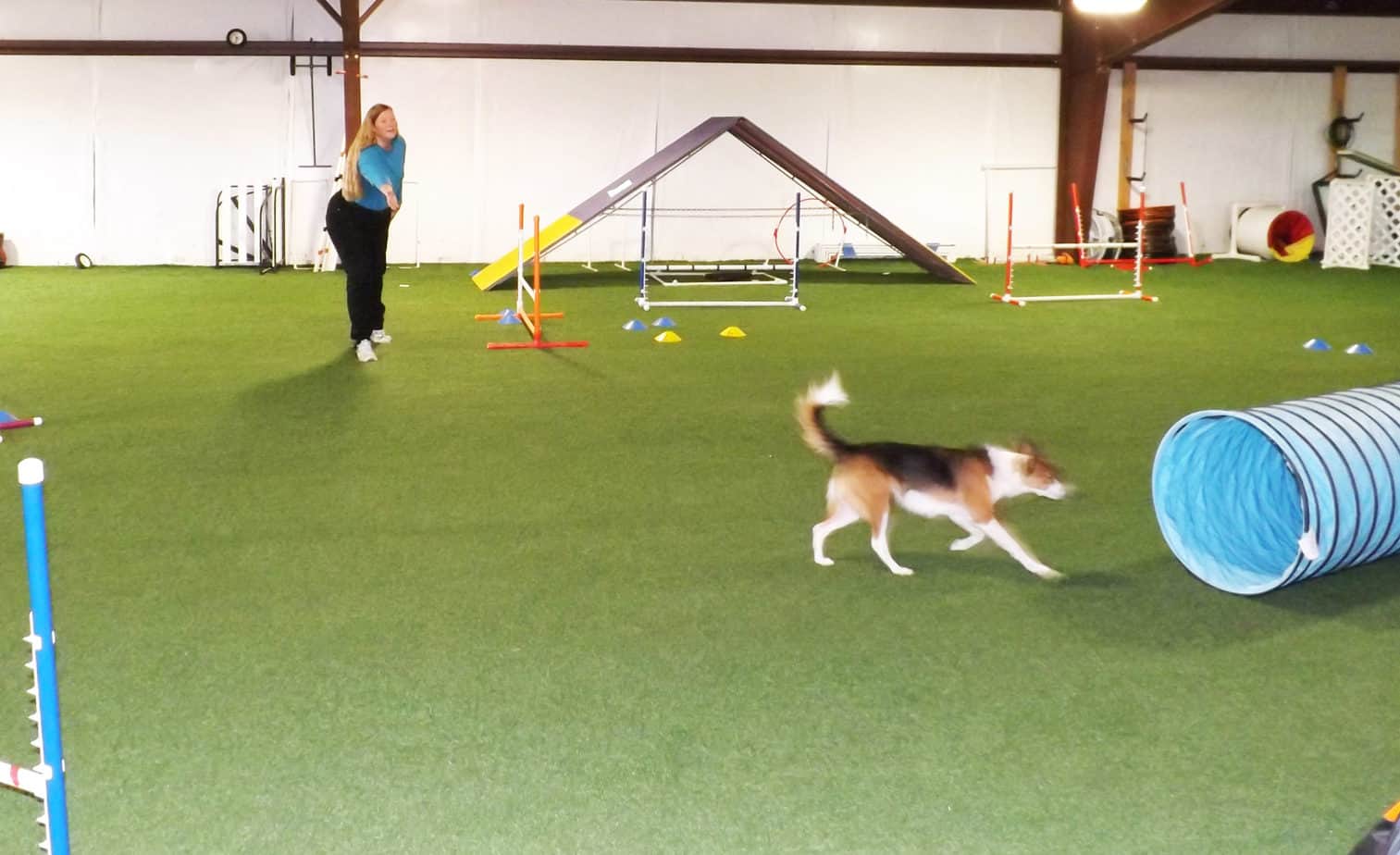
All three dogs had different issues to work on, but at the fundamental level, they all lacked confidence.
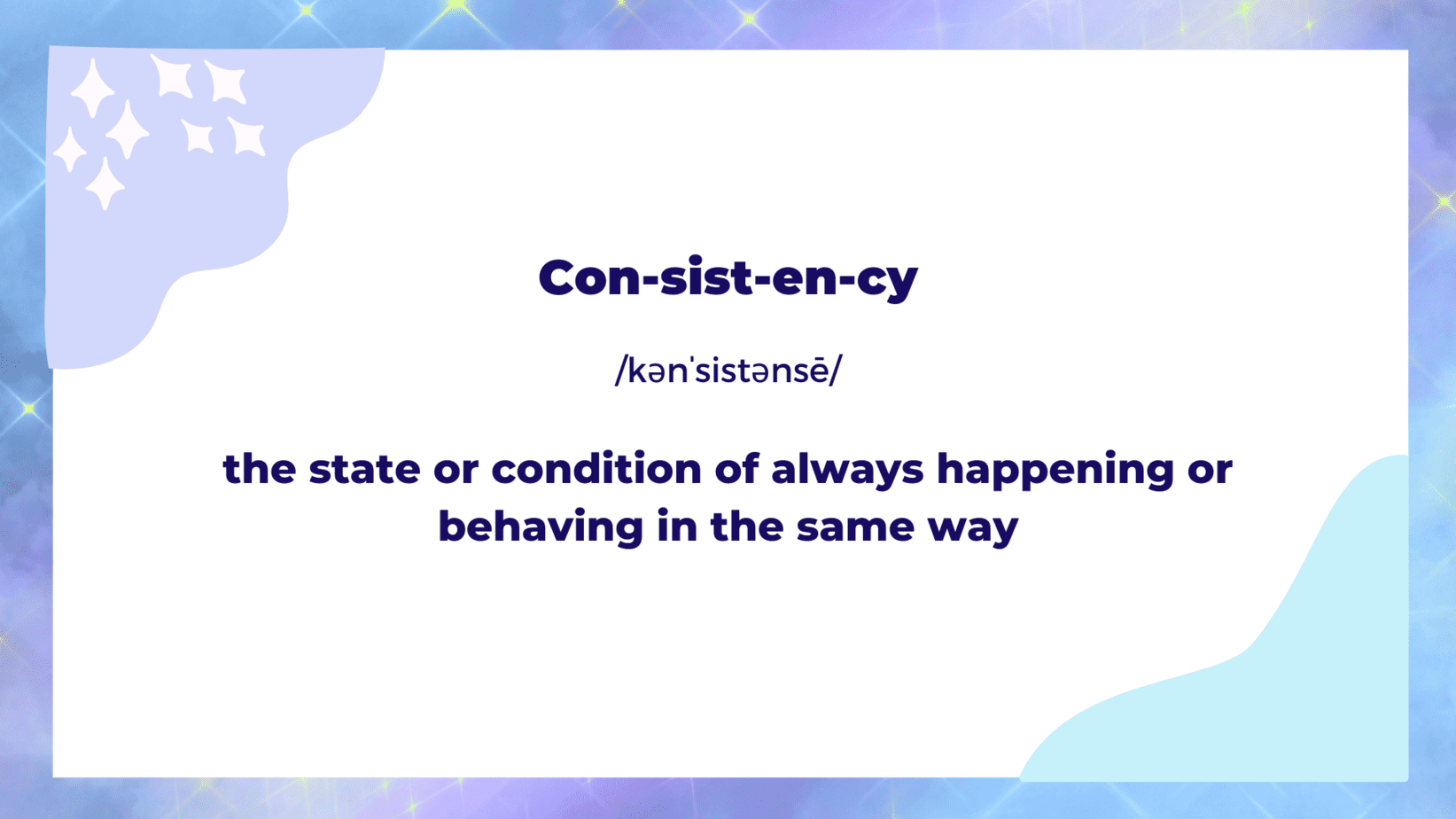
How Can I Create Confidence in My Agility Dog?
There are many ways we can build or erode our dog’s confidence during training, but also during our day-to-day interactions. Here are a few tips:
Make sure your cue means the same thing every time. Your dog probably confidently runs to the door when you put on your tennis shoes and pick up his leash. He has learned that those “cues” ALWAYS mean you are taking him for a walk. Build the same confidence in your cues for agility by always using the same cue for the same behavior.
Don’t make your dog repeat things if YOU get it wrong – and you will be the one getting it wrong 99% of the time. Find a graceful way to end the exercise and give your dog a reward, even if it wasn’t right. Then adjust and try again. Adjusting may mean reducing your distance, lowering the bar, or changing your handling to make it more obvious to the dog.
Speaking of rewards – keep a high rate of reward, and reward “close” as well as “perfect”. Give your dog “good try” rewards, even if it wasn’t quite right. If your dog fails more than once or twice, you probably increased your criteria too quickly. Reward, adjust, and try again, until you can get enough “close” attempts to give frequent rewards.
Change criteria in small increments. Don’t jump from asking your dog to take a jump from four feet away to asking him to perform it from 15 feet away. Build your dog’s independence slowly, and you will maintain his confidence.
Be clear in what you are asking. Dogs respond to very small changes in cues, so make sure you are not taking extra steps in the wrong direction, flapping your arms, or shifting your shoulders on successive repetitions of a skill. Simple, clear, direct communication of what you want will build your dog’s confidence in your cues.
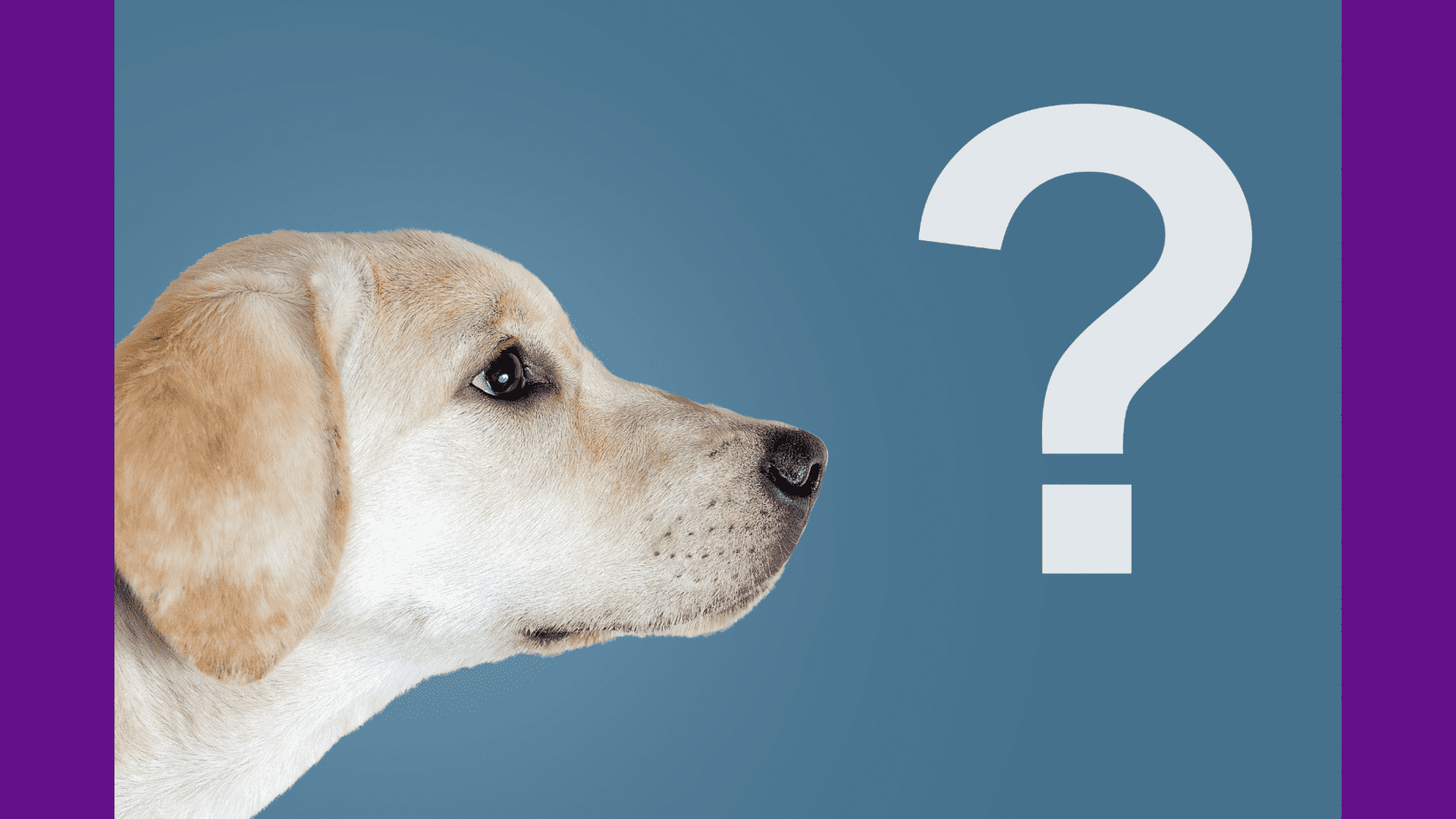
Build and strengthen your connection with your dog. I do not mean to stare at your dog through an exercise or course. However, if your dog went off course and you didn’t see him doing it, you were not connected. He needs to at least see the side of your face, and you need to see him out of your peripheral vision throughout the entire exercise.
Connection also refers to the bond you have with your dog. Good working relationships are built on trust and respect. Use positive methods to train agility, don’t yell at your dog or otherwise show your disappointment when things go wrong, and take time to just play, a lot.
When teaching distance in dog agility, confidence is key. Following just these few tips will help you build a dog who is confident in your cues and his abilities to perform independently.
You Might Also Like…
Five Ways to Crush It at Your Next Dog Agility Seminar
Going to a dog agility training seminar? Check out these five tips to maximize your return on investment!
Read This Before Deciding on Your Agility Dog’s Contact Performance
Which contact performance, running or stopped, is right for your team? The answer might surprise you.
Is Your Agility Dog a Pinto or a Ferrari?
If you’ve moved up from a slow or moderately-fast agility dog to a speed racer, here’s some advice to make your life easier.
Get tips, stories, discounts, and early notification of events and new courses delivered straight to your inbox! Join the community!
Top photo: Copyright 2018 Great Dane Photos. Used with permission.
Second photo courtesy of Howling Moon Photography.
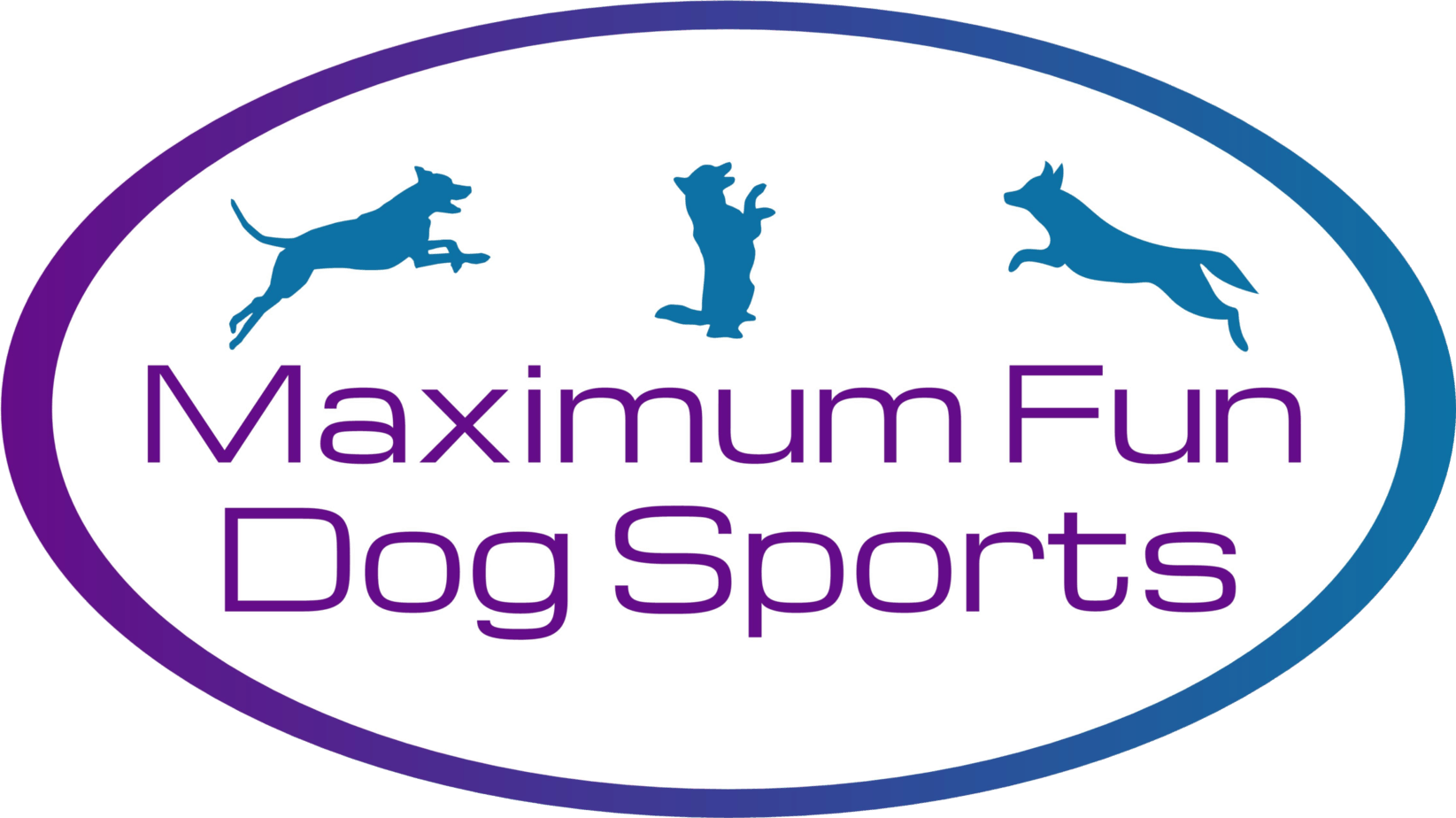
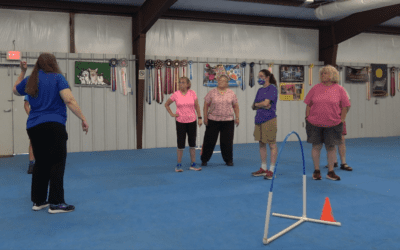
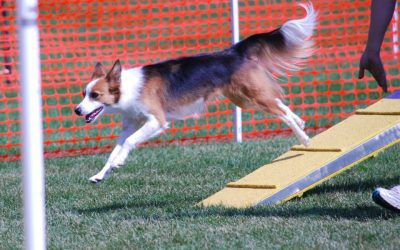
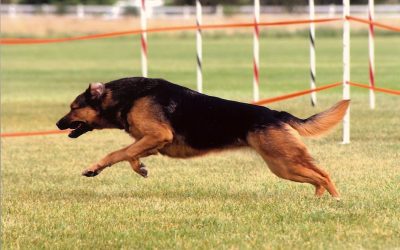
0 Comments